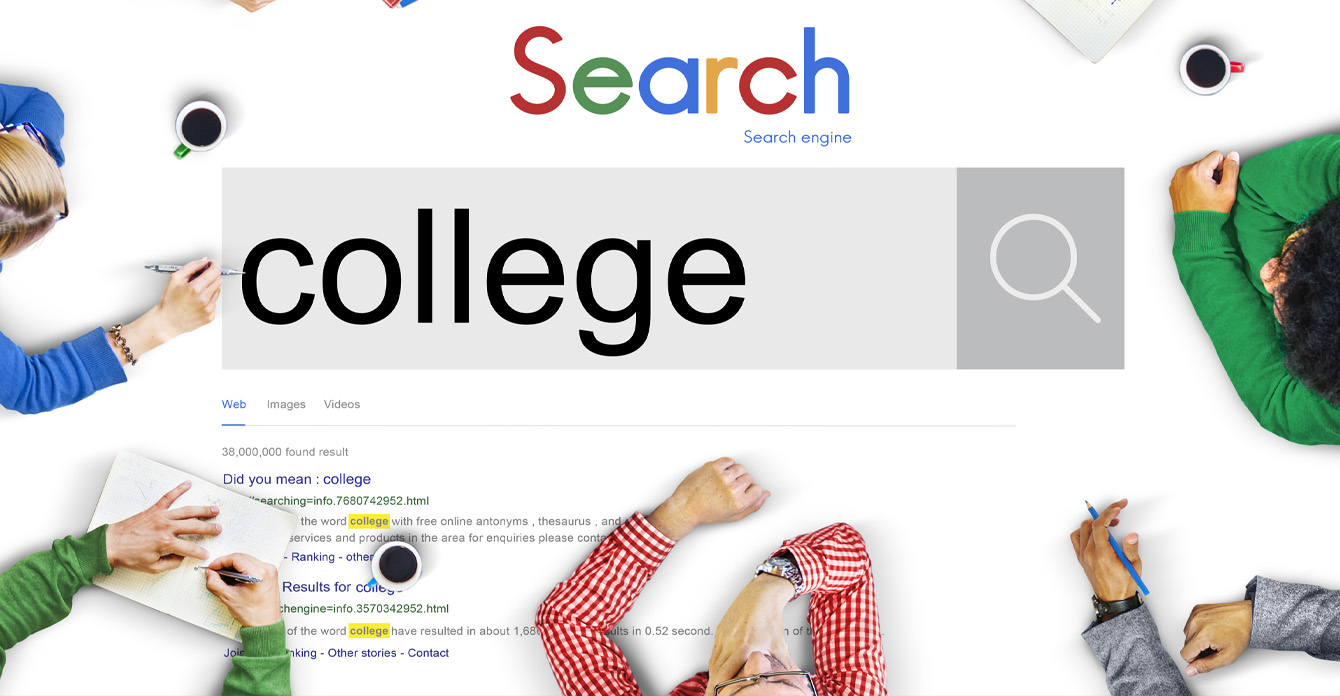Higher education’s predominant target audience—the prospective undergraduate student—is a consistent and specific demographic, which enables colleges to market with a level of precision other industries can’t match. It’s no secret that Generations Z and Alpha (your incoming and not-so-future students, respectively) spend the majority of their time on smartphones; in fact, nearly one quarter (22 percent) of Gen Z use their smartphones 10+ hours per day and 67 percent use search engines as their first source of information for higher education institutions. That’s why getting to the top of their Google results feed isn’t just important, it’s imperative.
With all the competition for their attention, how do you get your school front and center? Three simple words: search engine optimization (SEO). Often, schools think SEO starts and ends with keywords and miss out on valuable opportunities for greater audience engagement and higher ranking. Here are the most critical SEO factors to consider:
- Search Intent Matters
Many schools believe their sites are already SEO-rich because they shoehorn their name into every title, meta description, and page of content—but that’s working under the assumption that potential students are searching for your school by name. You need to customize your keywords around the four types of search intent: informational, navigational, transactional, and commercial investigation (research for future purchases). Only then will you be able to implement keywords that get results. Which brings us to…
- Keyword Placement Is Key
Keywords are only as effective as you make them—and organically including them in the first 100 words of text is the most powerful way to use them. Consider the first 100 words of your site’s pages as being what used to be referred to as “above the fold.” This is what Google will refer to when serving up search results and, while “keyword stuffing” should always be avoided, (judicially) repeating these keywords in the first 100 words will only strengthen your ranking.
- Content Is King
Considering that the first Google search result has a 33 percent chance of being clicked on and the second result’s chances drop all the way down to 15 percent, it’s vital to explore all avenues to secure this spot. The sites that dominate these results are significant in kilobytes (size), have an abundance of relevant keywords, and contain mixed content. All of this is to say that content length and relevance increases your chances at a top spot. Just don’t forget the rules of mobile-first website practices.
- Time Is Money
One, two, three… that’s the length of time 40 percent of visitors will wait for a website to load before abandoning it—and 80 percent of them won’t return. Slow loading sites suffer a ranking penalization from Google, making it even harder to reach your audience. Conversely, visitors are more likely to return to sites that load faster, which will boost your ranking.
- Blogs = Fresh Content
In addition to connecting with potential and current students on a more personal level, blogs are also a way of continually updating your site with fresh content. Your SEO ranking is greatly affected by “dwell time,” or how long visitors stay on your site. With new content being consistently added, they’re more likely to have longer dwell times.
There are a variety of individual factors that need to complement one another perfectly in order to produce top-tier SEO rankings. That’s why it’s vital to collaborate with a marketing partner that understands—and successfully manages—these strategies. Remember, an investment in a robust SEO campaign is an investment in the future of your school.










